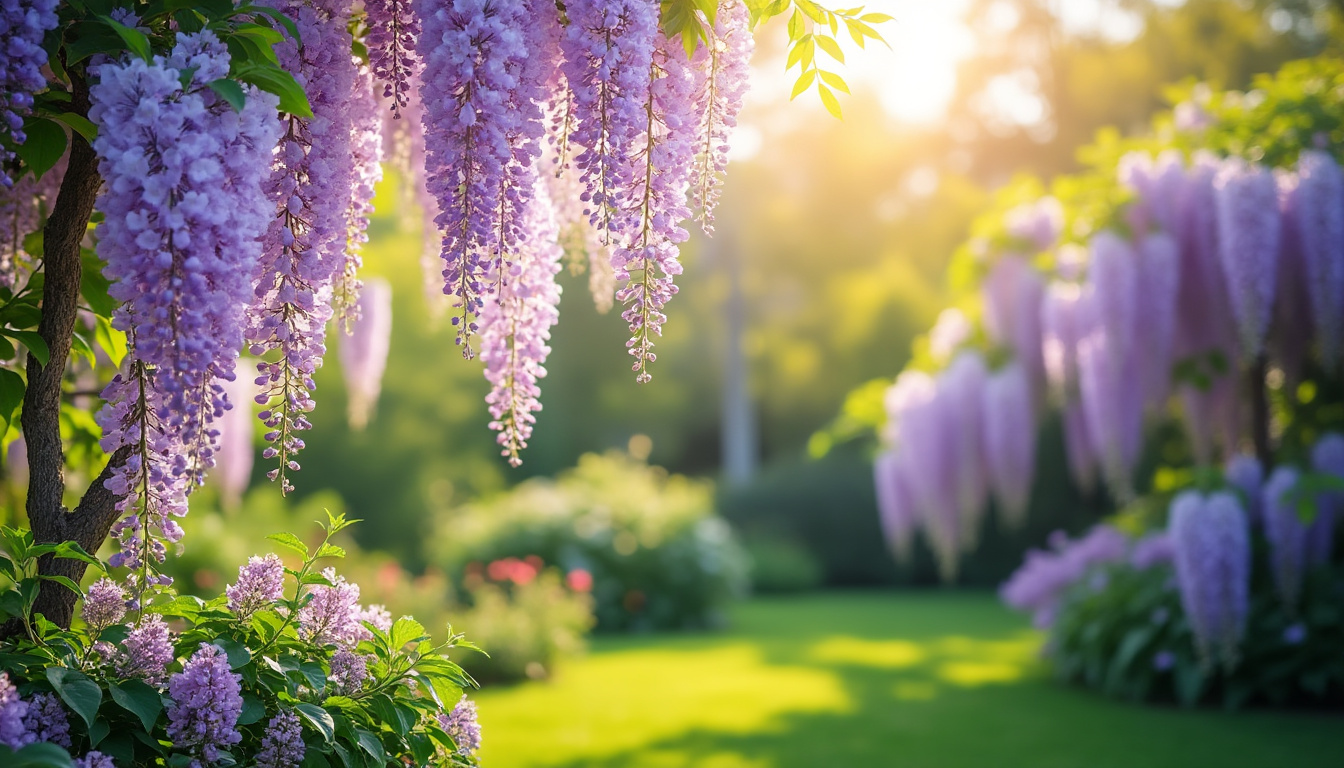Wisteria, a plant synonymous with enchanting beauty, offers a breathtaking display of flowers, as cascades of blue and purple bloom during the spring months. However, achieving this vibrant display requires not just basic care but also a meticulous approach to pruning. Understanding when and how to hard prune wisteria can significantly enhance its growth potential and flowering capability, turning a once unruly vine into a spectacular garden highlight.
- Importance of Pruning Wisteria
- Optimal Times for Pruning
- Best Practices and Techniques for Hard Pruning
- Growing Conditions and Maintenance
- Frequently Asked Questions
Importance of Pruning Wisteria
Wisteria is cherished not only for its gorgeous blooms but also for its ability to transform outdoor spaces into stunning landscapes. However, without regular pruning, wisteria can quickly become overgrown, potentially leading to problems such as reduced flowering and health issues related to excessive leaf growth.
Regular pruning of wisteria serves multiple purposes:
- Growth Control: Pruning helps manage the size and shape of the plant, preventing it from overwhelming its support structure and surrounding plants.
- Flower Production: By trimming away excessive foliage, sunlight and air circulation improve, which benefits blooming. Wisteria typically blossoms on new wood, making pruning a critical aspect of encouraging fuller and more abundant flowers in the upcoming seasons.
- Disease Prevention: Regularly removing dead or diseased branches can help deter pests and diseases that might otherwise compromise the plant’s health.
Wisteria can thrive in various environments, yet its success largely depends on proper care. The benefits of structured pruning extend considerably; correct techniques not only ensure growth control but also foster a healthier, more vibrant plant.
Optimal Times for Pruning
Pruning wisteria should be scheduled for two primary times during the year: late winter and summer. Each of these periods requires a different approach to ensure optimal results.
Late Winter to Early Spring Pruning (February – March)
Engaging in pruning during this period is essential as it helps to shape the plant and promote growth before the season’s new leaves emerge. This timing is particularly important for varieties that bloom on old wood.
- Technique: Make an oblique cut to protect the buds, ensuring that half of the buds on each stem are removed. For instance, if a stem has four buds, prune it down to two.
- Goal: This method reduces water accumulation, which can damage the plant and hinder its growth potential.
It is vital to approach this pruning session with patience, as precise cuts will lead to healthier blooms later on.
Summer Pruning (Late July – Early August)
After the flowering phase, summer pruning plays a crucial role in maintaining the overall health and aesthetics of the wisteria. This type of pruning focuses on controlling the growth of long branches.
- Technique: Shorten the vigorous growth from approximately 20–30 cm to ensure manageable vine length.
- Outcome: This practice not only keeps the plant tidy but encourages stronger flowering in future seasons by redirecting sap flow toward the remaining buds.
Conducting these two pruning sessions will ensure a robust framework for the wisteria and contribute to the magnificent floral displays it is known for.
Best Practices and Techniques for Hard Pruning
Understanding the best practices for hard pruning wisteria ensures that the plant remains healthy and thrives throughout the various seasons. Employing structured methods during pruning sessions can significantly affect its growth trajectory.
Analyzing Hard Pruning Needs
Hard pruning, while seemingly daunting, can be beneficial for significantly overgrown wisteria. Assessing the state of the vine prior to pruning is critical in determining the extent of cuts needed.
- Framework Creation: The main goal is to establish a framework of well-spaced main vines. This structural integrity supports side shoots that produce buds and flowers.
- Clearing Overgrowth: Regular checks during the growing season helps keep excessive growth in check, allowing for easy maintenance.
Tools Required for Pruning
Utilizing proper tools can make the job more manageable and facilitate cleaner cuts:
- Hand pruners
- Loppers for thicker branches
- Small handsaw for dangerous cuts
With this arsenal of tools, the process becomes more efficient, ensuring a healthier and well-maintained plant.
| Type of Pruning | Timing | Main Techniques |
|---|---|---|
| Winter Pruning | February – March | Heavy cuts to promote bud development |
| Summer Pruning | Late July – Early August | Shortening growth for better control |
When is the best time to prune red robin for optimal growth?
Growing Conditions and Maintenance
In addition to pruning, ensuring that wisteria is planted in the right conditions will provide a solid base for its growth.
Sunlight and Soil Requirements
Wisteria thrives in plenty of sunlight; therefore, choosing a location in the yard that receives full sun hours is crucial for optimal growth.
- Sunlight: Aim for at least 6-8 hours of sunlight daily.
- Soil Type: Wisteria flourishes in well-draining sandy or loamy soil, which prevents waterlogging.
- Watering: Maintain moist soil, especially during hot and dry periods. Regular watering supports consistent growth.
These elements combined offer the best foundation for a healthy wisteria that produces lush, cascading flowers.
Ongoing Care
Routine maintenance is essential for wisteria plants. Consistency in care will cement a thriving ecosystem and promote vigorous growth:
- Deadheading spent blooms to encourage continuous flowering.
- Removing unnecessary leaves and stems in the growing season to maintain airflow and structure.
- Fertilizing with quality products from brands like Miracle-Gro or Dr. Earth to provide the necessary nutrients.
Applying a balanced fertilizer will enhance soil quality, fostering vibrant blooms for years to come.
| Caring for Wisteria | Task | Frequency |
|---|---|---|
| Pruning | Winter & Summer | Twice a year |
| Fertilizing | Quality fertilizer application | Every spring |
| Watering | Maintain moisture level | As needed |
Frequently Asked Questions
Addressing common questions regarding wisteria can provide additional insight and ensure optimal care:
What is the best time to prune wisteria?
Pruning should occur twice a year: once in late winter (February – March) and again after flowering in summer (July – August).
How do you encourage blooming in wisteria?
To encourage blooming, ensure consistent pruning and maintain optimal watering and sunlight requirements to maximize flowering potential.
Can wisteria be pruned too hard?
Yes, if cut excessively, it may lead to a delay in flowering. It is crucial to maintain a balanced pruning approach.
What type of fertilizer is best for wisteria?
Using quality fertilizers from reputable brands such as Burpee or Pennington can support blooming and growth.
Can wisteria grow in shade?
While it can survive in partial shade, wisteria flourishes best in full sunlight to promote blooming.















